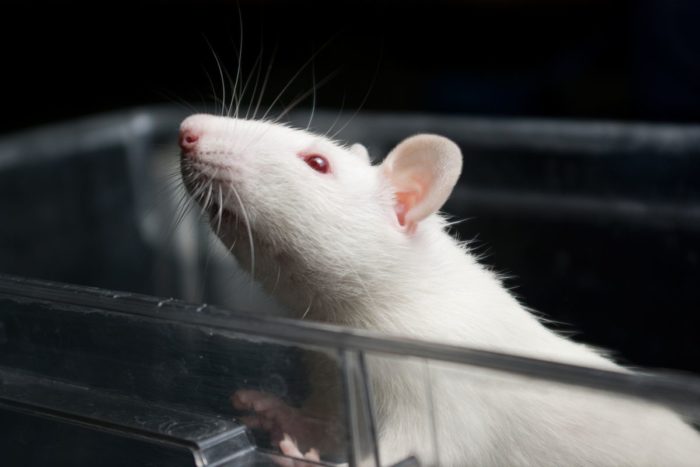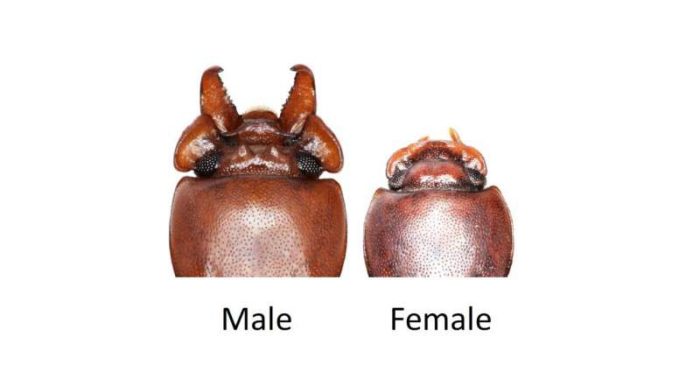Jun
28
2021
 In science it is not only OK to be wrong, it is an unavoidable and perpetual state – depending, of course, on how you define “wrong”. We lack a complete understanding of the universe, and all of our theories are at best approximations of reality. From this perspective no theory is completely correct, and therefore to some extent is at least somewhat wrong. The idea of progress in science it to become less wrong, knowing that perfect knowledge is not technically possible.
In science it is not only OK to be wrong, it is an unavoidable and perpetual state – depending, of course, on how you define “wrong”. We lack a complete understanding of the universe, and all of our theories are at best approximations of reality. From this perspective no theory is completely correct, and therefore to some extent is at least somewhat wrong. The idea of progress in science it to become less wrong, knowing that perfect knowledge is not technically possible.
Progress in science is therefore mostly about identifying what facts and ideas we hold that are wrong, exactly how they are wrong, and how we can gather new data or observations that will test those ideas, allow us to refine them, and become one step less wrong.
Some philosophers express this idea as – there is no metaphysical truth in science. What science has is models that predict how the universe will behave. The more accurate and far reaching those predictions, the better the model is. When these models start to break down, because new observations conflict with their predictions, then we have to revise the model to account for the new observations. In this way we make more and more complex, and/or deep models that can make better and better predictions.
Continue Reading »
Jun
25
2021
 Bonus points for anyone who has managed to commit to memory what the CRISPR acronym stands for – Clustered Regularly Interspaced Short Palindromic Repeats. I still have to look it up each time to make sure I get it right, but I’m getting there. I first wrote about CRISPR in 2015. It is a method of editing genes derived from bacteria. CRISPR itself is a means of targeting a specific sequence of DNA; you load it with the desired gene sequence and it will find the corresponding sequence in the DNA. Of course, it has to do something once it gets there, so CRISPR is also combined with a payload, such as Cas9, which are molecular scissors that will cut the DNA a the targeted location.
Bonus points for anyone who has managed to commit to memory what the CRISPR acronym stands for – Clustered Regularly Interspaced Short Palindromic Repeats. I still have to look it up each time to make sure I get it right, but I’m getting there. I first wrote about CRISPR in 2015. It is a method of editing genes derived from bacteria. CRISPR itself is a means of targeting a specific sequence of DNA; you load it with the desired gene sequence and it will find the corresponding sequence in the DNA. Of course, it has to do something once it gets there, so CRISPR is also combined with a payload, such as Cas9, which are molecular scissors that will cut the DNA a the targeted location.
Since the potential for the CRISPR-Cas9 system in genetic engineering was realized, the technology has been on a steep climb of advancement. This was a new platform, one that had the advantage of being relatively quick, easy, and cheap. This means that genetics researchers round the world were all able to play with their new toy, and not only find uses for it but find ways to improve it. The basic technology slices DNA at a desired location. One limitation of this technology, as accurate as it is, there are still off-target effects. But researcher have already started to unpack how to make CRISPR slower but more accurate (vs faster but less accurate). They know how to dial in the accuracy, and it’s likely this aspect of the technology will improve further.
Also, once you make a slice in the DNA this can have a couple of effects. If all you want to do is kill the cell (like a cancer cell) you just make a bunch of slices and be done with it. If you want to inactivate a single gene your job may also be done. However, if you want to edit the gene then there is another step. You need to coax the cell into using its own repair mechanism to fix the break in the DNA while simultaneously inserting a new bit of DNA into the break. This is full gene editing, and while it’s still a bit tricky, it is much faster and cheaper than other methods.
Continue Reading »
Jun
24
2021
 Glyphosate is a weed killer widely used by the agricultural industry and also available for consumer use in products like Roundup. Likely because of its widespread use, it has become a political target. It has also become the focus of high profile lawsuits. This means it is essential that we have objective scientific reviews of the evidence on glyphosate safety. People are still free to have varying opinions regarding the use of pesticides in agriculture, but we should be able to agree on the science. But of course we know that often does not happen. People often distort the science to suit their political or legal agenda.
Glyphosate is a weed killer widely used by the agricultural industry and also available for consumer use in products like Roundup. Likely because of its widespread use, it has become a political target. It has also become the focus of high profile lawsuits. This means it is essential that we have objective scientific reviews of the evidence on glyphosate safety. People are still free to have varying opinions regarding the use of pesticides in agriculture, but we should be able to agree on the science. But of course we know that often does not happen. People often distort the science to suit their political or legal agenda.
My purpose here is not to cheerlead for weed killers, or defend any corporation, but to have a clear-eyed view of the published science. Fortunately, there is quite a bit of it, and experts have systematically reviewed this evidence with the purpose of distilling it into bottom-line conclusions about the safety of glyphosate. There have been many, but the most recent one, and therefore most up to date, is a thorough review by the European Union (EU). In a June 2021 11,000 page report they conclude that (in their legalese) – “The AGG proposes that classification of glyphosate as for germ cell mutagenicity
genotoxic or mutagenic is not justified.” They make the same determination for glyphosate not being a carcinogen, having reproductive toxicity, or causing organ toxicity. They did retain its classification that it can “cause serious eye damage.” So yeah, don’t get the stuff directly into your eyes. Regarding ecotoxicity, the EU found that glyphosate is generally safe, however they make an exception for aquatic life, concluding that glyphosate is “toxic to aquatic life”. These latter two concerns were already known and present in prior reviews, and so do not represent any change.
Based upon all of this the review recommends glyphosate for approval for use in the EU. Essentially, if used properly, glyphosate is safe for farm workers, consumers, and the environment. Of course the phrase, “If used properly” is doing a lot of heavy lifting there. And this is where a lot of debate can be had. But in that debate it is critical to consider the alternatives to using glyphosate in farming.
Continue Reading »
Jun
22
2021
Researchers report a study in which they investigate the potential of a closed loop brain-machine interface (BMI) to treat pain in rats. If this line of research is successful it could lead to a new paradigm in the management of chronic pain.
in which they investigate the potential of a closed loop brain-machine interface (BMI) to treat pain in rats. If this line of research is successful it could lead to a new paradigm in the management of chronic pain.
Chronic pain is a tricky condition to treat because we currently have limited options, all of which are problematic in some way. Acute pain, such as after trauma or surgery, is easier to manage because the treatment course is likely to be limited. This kind of pain is called nociceptive pain, when it is the result of tissue damage. The obvious goal here is to manage the damage by treating the underlying condition, but manage the pain in the meantime until healing can reduce the pain. Another category of pain is terminal pain, such as in some cancer patients. While this has its own challenges, aggressive pain management is also appropriate.
Chronic pain, however, may need to be sustained for years, and this presents serious challenges. This may be due to chronic conditions that cannot be cured, such as arthritis, degenerative changes, and primary pain conditions like migraines. This category also include neuropathic pain, where the pain is due to abnormalities in the nervous system itself, rather than the nervous system properly detecting tissue damage. With neuropathic pain, the pain itself is often the disorder.
The challenges of chronic pain stem from the fact that it is often difficult to find a treatment that is effective. But also, even if a treatment is effective, pain medication itself (analgesics) has risks from long term use. Aspirin-like drugs (NSAIDS) can cause ulcers and kidney damage. Acetaminophen can cause liver damage. Narcotics are addictive and cause tolerance. The best approach to chronic neuropathic pain is what we call neuropathic pain prophylaxis – medications safe and intended to take daily to reduce overall pain. But these medications can have significant side effects, and don’t always work sufficiently. There are also nerve stimulators, which avoid pharmaceutical side effects, but have limited efficacy.
Continue Reading »
Jun
18
2021
 Magicians, marketers, and politicians all count, to some degree, on the belief that people (at least collectively) behave in fairly predictable patterns. Each has their own subculture and, history, and research as a guide, but the core phenomenon is the same. Magicians are probably the easiest to demonstrate – if you have ever been to a quality magic show you have likely been amazed at what you saw. This is because magicians exploit predictable patterns in how people direct their attention and process information, knowledge built over centuries of trial and error. Politicians, rather, seem to go on personality and social instinct, with the good ones rising to the top. Although they are increasingly supported by a campaigning industry which is very data driven.
Magicians, marketers, and politicians all count, to some degree, on the belief that people (at least collectively) behave in fairly predictable patterns. Each has their own subculture and, history, and research as a guide, but the core phenomenon is the same. Magicians are probably the easiest to demonstrate – if you have ever been to a quality magic show you have likely been amazed at what you saw. This is because magicians exploit predictable patterns in how people direct their attention and process information, knowledge built over centuries of trial and error. Politicians, rather, seem to go on personality and social instinct, with the good ones rising to the top. Although they are increasingly supported by a campaigning industry which is very data driven.
Political campaigns, therefore, are increasingly like any marketing campaign, which is intensively data and research driven. Not only do marketers read and benefit from the psychological research, they have their own research, complete with their own scientific journals. All of this is premised on the notion that people are far from the unique snowflakes we like to think, and are more like predictable sheep that can be herded. Research generally supports this latter view.
Now of course anyone can rise above the herd with knowledge, critical thinking, and consumer savvy. We can learn the tricks, read reviews, learn something about cognitive biases, and take more control of our own purchasing decisions. While I highly recommend all of this, the result is partly an arms-race where marketers try to get more and more subtle with their manipulation, trying to fly under our critical thinking radar. With the advent of big data, social media, and artificial intelligence (AI) their ability to do so is getting frighteningly powerful. This is not something we should underestimate.
Continue Reading »
Jun
17
2021
 In 2019 and 2020 the red supergiant star Betelgeuse was dimming, and by a significant amount. Betelgeuse is the right shoulder of the constellation Orion and so is one of the easier stars to find. As a red supergiant it is also in the later stages of it’s life. Such start might dim like this when they are getting close to going supernova, and so that possibility was excitedly proposed. Not only would it be incredibly cool to see a supernova that close by – it would be visible during the day for weeks, or light up the night sky – but the opportunity to study a supernova close up (just 724 light years away) like that would be a scientific boon. But astronomers were too cautious to jump to conclusions, and therefore explored other options as well.
In 2019 and 2020 the red supergiant star Betelgeuse was dimming, and by a significant amount. Betelgeuse is the right shoulder of the constellation Orion and so is one of the easier stars to find. As a red supergiant it is also in the later stages of it’s life. Such start might dim like this when they are getting close to going supernova, and so that possibility was excitedly proposed. Not only would it be incredibly cool to see a supernova that close by – it would be visible during the day for weeks, or light up the night sky – but the opportunity to study a supernova close up (just 724 light years away) like that would be a scientific boon. But astronomers were too cautious to jump to conclusions, and therefore explored other options as well.
It didn’t take long before the evidence started pointing in a different direction. First, the star started to brighten again, which would not happen if it were about to go kablooi. Betelgeuse, it seems, is not in its final stage, ready to collapse and explode, and likely still has tens of thousands of years of life left. The dimming was likely due to a large dust cloud. But that would be unprecedented, and astronomers had not ready explanation for why a dust cloud would suddenly obscure such a large star to such a degree. Now a new study may have solved the mystery, thanks to high resolution observations of the star. They report:
Here we report high-angular-resolution observations showing that the southern hemisphere of Betelgeuse was ten times darker than usual in the visible spectrum during its Great Dimming. Observations and modelling support a scenario in which a dust clump formed recently in the vicinity of the star, owing to a local temperature decrease in a cool patch that appeared on the photosphere.
Continue Reading »
Jun
15
2021
 There are many amusing movie tropes, mostly used as a shorthand for directors to communicate with the audience. Bags of groceries always have either a loaf of bread or a leafy vegetable sticking out the top, so that you know at a glance they are groceries. Live mics always give a burst of feedback when someone steps up to them. Holograms always glitch, so you know they are holograms. People falling in love always spray water on each other and shop in open-air markets. All raptors sound like red-tailed hawks.
There are many amusing movie tropes, mostly used as a shorthand for directors to communicate with the audience. Bags of groceries always have either a loaf of bread or a leafy vegetable sticking out the top, so that you know at a glance they are groceries. Live mics always give a burst of feedback when someone steps up to them. Holograms always glitch, so you know they are holograms. People falling in love always spray water on each other and shop in open-air markets. All raptors sound like red-tailed hawks.
Some tropes, however, are not benign. They are based on and perpetuate a misunderstanding of reality. A pernicious one I have had to deal with professionally is the motion that someone can wake from a prolonged coma and suddenly be neurologically high functioning. They wake up, they are bleary eyed and confused but otherwise intact. As an aside, another trope is that as soon as the person wakes up whoever is present yells for a doctor as if it is an emergency. Here’s a pro tip – it might be an emergency when someone suddenly falls unconscious, but not when they wake up.
Typically there may be a period of physical recovery so they can get their strength back, but neurologically waking up from a coma is presented as flipping on a switch. The problem with this trope is that it almost never occurs (and I am saying “almost” just to be cautious – I am not aware of any cases). This does not mean that meaningful recovery cannot happen, but we have to put this into perspective. The trope also goes beyond entertainment. We see it in news reporting as well, even if only by glossing over important details. Here is a recent BBC report of a woman waking from a 10 month coma. A non-expert reading this would almost certainly come away with a distorted impression of what likely happened (I have no inside information on this specific case, I am only basing that assessment on the BBC report).
Continue Reading »
Jun
10
2021
 There is definitely something to be said for the neurodiversity perspective – when it comes to brain function there is a wide range of what can be considered healthy. Not all differences should be looked at through the lens of pathology or dysfunction. Some brains may be more typical than others, but that does not mean objectively “normal”, better, or healthier. Like any valid concept it can be taken too far. There are conditions that can reasonably considered to be brain disorders causing objective dysfunction. But the scope of healthy variation is likely far broader than many people assume.
There is definitely something to be said for the neurodiversity perspective – when it comes to brain function there is a wide range of what can be considered healthy. Not all differences should be looked at through the lens of pathology or dysfunction. Some brains may be more typical than others, but that does not mean objectively “normal”, better, or healthier. Like any valid concept it can be taken too far. There are conditions that can reasonably considered to be brain disorders causing objective dysfunction. But the scope of healthy variation is likely far broader than many people assume.
Part of this concept is that brain organization and function includes many trade-0ffs. To some extent this is a simple matter of finite brain resources that are allocated to specific abilities, increase one and by necessity another has to diminish. Also different functions can be at cross-purposes. Extraverts may excel in social situations, but introverts are better able to focus their attention inward to accomplish certain tasks.
In light of this, how should we view the phenomenon of aphantasia, a relative inability to summon a mental image? Like most neurological functions, the ability to have an internal mental image varies along a spectrum. At one end of the extreme are those with a hyperability to recall detailed mental images. At the other are those who may completely lack this ability. Most people are lumped somewhere in the middle. The phenomenon of aphantasia was first described in the 1880s, then mostly forgotten for about a century, and now there is renewed interest partly due to our increased ability to image brain function.
A new study does just that, looking at people across that phantasia spectrum to see how their brain’s differ. Using fMRI they scanned the brains of those with aphantasia, hyperphantasia, and average ability. They found that in neurotypical subject there was a robust connection between the visual cortex (which becomes active when imagining an image) and the frontal cortex, involved in attention and decision-making. That makes sense – this connection allows us to direct our attention inwardly to our visual cortex, to activate specific stored images there. Subjects with aphantasia had a relative lack of these connections. While this is a simple model, it makes perfect sense.
Continue Reading »
Jun
08
2021
 Evolution if one of the most fascinating scientific phenomena because it is so complex and operates over such varying and long timescales. It’s a real challenge to wrap one’s head around. There is therefore a tendency to settle on overly simplistic evolutionary narratives. This is not a criticism, we all do this in an attempt to grapple with evolutionary thinking. The challenge is to recognize this fact, and be open to a deeper, more complex and nuanced understanding of evolutionary processes. It’s a great example of what should be a general intellectual posture – recognize the limits of our current understanding (wherever that may be on the spectrum) and not only be open to, but seek out new information and concepts to keep incrementally pushing our understanding forward.
Evolution if one of the most fascinating scientific phenomena because it is so complex and operates over such varying and long timescales. It’s a real challenge to wrap one’s head around. There is therefore a tendency to settle on overly simplistic evolutionary narratives. This is not a criticism, we all do this in an attempt to grapple with evolutionary thinking. The challenge is to recognize this fact, and be open to a deeper, more complex and nuanced understanding of evolutionary processes. It’s a great example of what should be a general intellectual posture – recognize the limits of our current understanding (wherever that may be on the spectrum) and not only be open to, but seek out new information and concepts to keep incrementally pushing our understanding forward.
In that spirit, here is a study on the evolution of broad-horned flour-beetles that illustrates some of evolution’s complexity. The male broad-horned has exaggeratedly large mandibles, which is uses to compete with other males for mating access to females. This is an example of sexual selection, when a feature specifically increases mating success but is not necessarily broadly adaptable. The go-to example of this is the peacock’s tail feathers – a garish display meant to attract females, but an evolutionary burden in many other aspects. This sets up an evolutionary tug-of-war, where a feature may be advantageous in one respect but disadvantageous in another. Evolutionary processes are fairly efficient at balancing such conflicting forces.
As an aside, the balances tend to be only metastable. They can alter with changes in the environment or behavior. Even different individuals within a species can adopt different survival strategies that result in a different balance of traits. If a population within a species does this it may even eventually lead to a speciation event. For example, it has been documented that within some primate species dominant males will have access to females due to their alpha status, while others gain access by currying favor with the alpha, and still others gain access by gaining favor with the females and sneaking behind the alpha’s back. Still others may act as a “wing man” to a close kin, promoting their genes into the next generation by proxy. The lesson here is – no one strategy captures the wide diversity of behavior even within a single species.
Continue Reading »
Jun
07
2021
 A few years ago I was sued for libel, in a case I ultimately won in summary judgement where the other side had to pay for some of my legal costs because the judge deemed it unreasonable. But the case did proceed to discovery, which means each side gets to request information from the other. This included me turning over something like 40,000 e-mails. Search tools allow for sifting through these e-mails to find those that may be relevant. And of course, the other side was able to find e-mails that they could twist to create the impression of something sinister. Fortunately, in a court of law, there are rules of evidence and logic, and there was time to dig down to see if the e-mails in fact were evidence of anything. They weren’t.
A few years ago I was sued for libel, in a case I ultimately won in summary judgement where the other side had to pay for some of my legal costs because the judge deemed it unreasonable. But the case did proceed to discovery, which means each side gets to request information from the other. This included me turning over something like 40,000 e-mails. Search tools allow for sifting through these e-mails to find those that may be relevant. And of course, the other side was able to find e-mails that they could twist to create the impression of something sinister. Fortunately, in a court of law, there are rules of evidence and logic, and there was time to dig down to see if the e-mails in fact were evidence of anything. They weren’t.
In the court of public opinion, however, there are no rules. FOIA (Freedom of Information Act) can serve as a mechanism for discovery, and many academics, scientists, and public servants have been on the receiving end of them. Released e-mails can then be picked over with the zeal of a prosecuting attorney, but without ever facing the burden of legal protocol or a trained judge. In fact the purpose of this exercise is not to dig down to the truth but to cherry pick for anything that can be taken out of context to fuel conspiracy theories or to tarnish the other side. The purpose begins and ends with the twisting to create a sinister impression, and the results of any actual investigation are irrelevant (at least to many).
The first high-profile case of such an “e-mail gate” was with hacked e-mails from the Climate Research Unit. Investigations ultimately found no evidence of any deception or anything nefarious going on, but the damage was done. The fact is, in any scientific process scientists will discuss many things with each other. A lot of crap will be thrown against the wall, and it’s very easy to take casual conversations out of context. Anti-science activists saw this as a template, and began using FOIA requests to harass scientists and hunt for similar gotchas.
Continue Reading »
 In science it is not only OK to be wrong, it is an unavoidable and perpetual state – depending, of course, on how you define “wrong”. We lack a complete understanding of the universe, and all of our theories are at best approximations of reality. From this perspective no theory is completely correct, and therefore to some extent is at least somewhat wrong. The idea of progress in science it to become less wrong, knowing that perfect knowledge is not technically possible.
In science it is not only OK to be wrong, it is an unavoidable and perpetual state – depending, of course, on how you define “wrong”. We lack a complete understanding of the universe, and all of our theories are at best approximations of reality. From this perspective no theory is completely correct, and therefore to some extent is at least somewhat wrong. The idea of progress in science it to become less wrong, knowing that perfect knowledge is not technically possible.
 Bonus points for anyone who has managed to commit to memory what the CRISPR acronym stands for – Clustered Regularly Interspaced Short Palindromic Repeats. I still have to look it up each time to make sure I get it right, but I’m getting there.
Bonus points for anyone who has managed to commit to memory what the CRISPR acronym stands for – Clustered Regularly Interspaced Short Palindromic Repeats. I still have to look it up each time to make sure I get it right, but I’m getting there.  Glyphosate is a weed killer widely used by the agricultural industry and also available for consumer use in products like Roundup. Likely because of its widespread use, it has become a political target. It has also become the focus of high profile lawsuits. This means it is essential that we have objective scientific reviews of the evidence on glyphosate safety. People are still free to have varying opinions regarding the use of pesticides in agriculture, but we should be able to agree on the science. But of course we know that often does not happen. People often distort the science to suit their political or legal agenda.
Glyphosate is a weed killer widely used by the agricultural industry and also available for consumer use in products like Roundup. Likely because of its widespread use, it has become a political target. It has also become the focus of high profile lawsuits. This means it is essential that we have objective scientific reviews of the evidence on glyphosate safety. People are still free to have varying opinions regarding the use of pesticides in agriculture, but we should be able to agree on the science. But of course we know that often does not happen. People often distort the science to suit their political or legal agenda.
 Magicians, marketers, and politicians all count, to some degree, on the belief that people (at least collectively) behave in fairly predictable patterns. Each has their own subculture and, history, and research as a guide, but the core phenomenon is the same. Magicians are probably the easiest to demonstrate – if you have ever been to a quality magic show you have likely been amazed at what you saw. This is because magicians exploit predictable patterns in how people direct their attention and process information, knowledge built over centuries of trial and error. Politicians, rather, seem to go on personality and social instinct, with the good ones rising to the top. Although they are increasingly supported by a campaigning industry which is very data driven.
Magicians, marketers, and politicians all count, to some degree, on the belief that people (at least collectively) behave in fairly predictable patterns. Each has their own subculture and, history, and research as a guide, but the core phenomenon is the same. Magicians are probably the easiest to demonstrate – if you have ever been to a quality magic show you have likely been amazed at what you saw. This is because magicians exploit predictable patterns in how people direct their attention and process information, knowledge built over centuries of trial and error. Politicians, rather, seem to go on personality and social instinct, with the good ones rising to the top. Although they are increasingly supported by a campaigning industry which is very data driven. In 2019 and 2020 the red supergiant star Betelgeuse was dimming, and by a significant amount. Betelgeuse is the right shoulder of the constellation Orion and so is one of the easier stars to find. As a red supergiant it is also in the later stages of it’s life. Such start might dim like this when they are getting close to going supernova, and so that possibility was excitedly proposed. Not only would it be incredibly cool to see a supernova that close by – it would be visible during the day for weeks, or light up the night sky – but the opportunity to study a supernova close up (just 724 light years away) like that would be a scientific boon. But astronomers were too cautious to jump to conclusions, and therefore explored other options as well.
In 2019 and 2020 the red supergiant star Betelgeuse was dimming, and by a significant amount. Betelgeuse is the right shoulder of the constellation Orion and so is one of the easier stars to find. As a red supergiant it is also in the later stages of it’s life. Such start might dim like this when they are getting close to going supernova, and so that possibility was excitedly proposed. Not only would it be incredibly cool to see a supernova that close by – it would be visible during the day for weeks, or light up the night sky – but the opportunity to study a supernova close up (just 724 light years away) like that would be a scientific boon. But astronomers were too cautious to jump to conclusions, and therefore explored other options as well. There are many amusing movie tropes, mostly used as a shorthand for directors to communicate with the audience. Bags of groceries always have either a loaf of bread or a leafy vegetable sticking out the top, so that you know at a glance they are groceries. Live mics always give a burst of feedback when someone steps up to them. Holograms always glitch, so you know they are holograms. People falling in love always spray water on each other and shop in open-air markets. All raptors sound like red-tailed hawks.
There are many amusing movie tropes, mostly used as a shorthand for directors to communicate with the audience. Bags of groceries always have either a loaf of bread or a leafy vegetable sticking out the top, so that you know at a glance they are groceries. Live mics always give a burst of feedback when someone steps up to them. Holograms always glitch, so you know they are holograms. People falling in love always spray water on each other and shop in open-air markets. All raptors sound like red-tailed hawks. There is definitely something to be said for the neurodiversity perspective – when it comes to brain function there is a wide range of what can be considered healthy. Not all differences should be looked at through the lens of pathology or dysfunction. Some brains may be more typical than others, but that does not mean objectively “normal”, better, or healthier. Like any valid concept it can be taken too far. There are conditions that can reasonably considered to be brain disorders causing objective dysfunction. But the scope of healthy variation is likely far broader than many people assume.
There is definitely something to be said for the neurodiversity perspective – when it comes to brain function there is a wide range of what can be considered healthy. Not all differences should be looked at through the lens of pathology or dysfunction. Some brains may be more typical than others, but that does not mean objectively “normal”, better, or healthier. Like any valid concept it can be taken too far. There are conditions that can reasonably considered to be brain disorders causing objective dysfunction. But the scope of healthy variation is likely far broader than many people assume. Evolution if one of the most fascinating scientific phenomena because it is so complex and operates over such varying and long timescales. It’s a real challenge to wrap one’s head around. There is therefore a tendency to settle on overly simplistic evolutionary narratives. This is not a criticism, we all do this in an attempt to grapple with evolutionary thinking. The challenge is to recognize this fact, and be open to a deeper, more complex and nuanced understanding of evolutionary processes. It’s a great example of what should be a general intellectual posture – recognize the limits of our current understanding (wherever that may be on the spectrum) and not only be open to, but seek out new information and concepts to keep incrementally pushing our understanding forward.
Evolution if one of the most fascinating scientific phenomena because it is so complex and operates over such varying and long timescales. It’s a real challenge to wrap one’s head around. There is therefore a tendency to settle on overly simplistic evolutionary narratives. This is not a criticism, we all do this in an attempt to grapple with evolutionary thinking. The challenge is to recognize this fact, and be open to a deeper, more complex and nuanced understanding of evolutionary processes. It’s a great example of what should be a general intellectual posture – recognize the limits of our current understanding (wherever that may be on the spectrum) and not only be open to, but seek out new information and concepts to keep incrementally pushing our understanding forward. A few years ago I was sued for libel, in a case I ultimately won in summary judgement where the other side had to pay for some of my legal costs because the judge deemed it unreasonable. But the case did proceed to discovery, which means each side gets to request information from the other. This included me turning over something like 40,000 e-mails. Search tools allow for sifting through these e-mails to find those that may be relevant. And of course, the other side was able to find e-mails that they could twist to create the impression of something sinister. Fortunately, in a court of law, there are rules of evidence and logic, and there was time to dig down to see if the e-mails in fact were evidence of anything. They weren’t.
A few years ago I was sued for libel, in a case I ultimately won in summary judgement where the other side had to pay for some of my legal costs because the judge deemed it unreasonable. But the case did proceed to discovery, which means each side gets to request information from the other. This included me turning over something like 40,000 e-mails. Search tools allow for sifting through these e-mails to find those that may be relevant. And of course, the other side was able to find e-mails that they could twist to create the impression of something sinister. Fortunately, in a court of law, there are rules of evidence and logic, and there was time to dig down to see if the e-mails in fact were evidence of anything. They weren’t.




